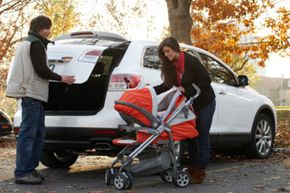The auto industry's recent struggle keeps making headlines, but it isn't exactly news anymore -- sales have slumped, factories have shut down, and entire brands have been killed off. There is a bright spot, though, and as a result, many families are happily cruising in style. The crossover segment has enjoyed staggering growth, with a sales increase that's by far the highest in the industry, and automakers are still muddling the category with new contributions. Today, there are upwards of 70 crossovers sold in the United States.
The term "crossover" came into the lexicon less than a decade ago, when car buyers didn't really know what they were -- but they bought them anyway. What was once something of a catch-all category (tall wagons and sedans, rounded minivans, and compact SUVs) is now becoming more clearly defined despite a growing breadth of options. "Crossover" is now used almost interchangeably with "compact SUV," but some new entries are pushing those boundaries.
Advertisement
When SUVs became the go-to family vehicle, a somewhat rugged ride was accepted as part of the experience. But over time, comfort fell back into favor, and now crossovers are appreciated for their improved ride and handling characteristics. Generally, crossover passengers ride in more comfort than an SUV would provide. Because they're based on car platforms, not trucks (like traditional SUVs), they tend to be more stable and easier to drive. They can maneuver through smaller spaces, stop more quickly, and are easier to park. Easy drivability and a cushy ride tell only part of the story, though. Keep reading to find out why many new car shoppers think crossovers offer the best possible package.





